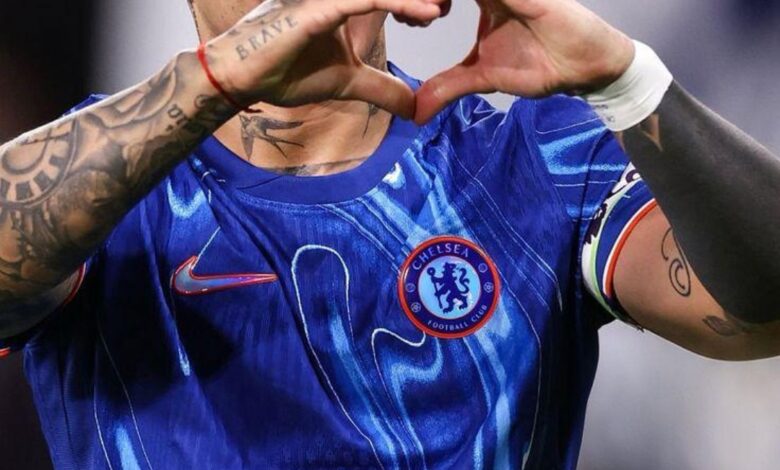💙 Enzo Fernández brought joy and hope to a poor school in Greater Buenos Aires, where he taught football and played with barefoot children on a dusty, dirt field. But what happened the next morning wasn’t just a touching moment – it was a story about dreams, dedication, and belief in the future. “Dreams don’t care where you were born.” A message that cannot be missed, a moment that touches the heart of every football lover

In a heartwarming display of generosity and passion, Enzo Fernández, the celebrated Argentine footballer, recently visited a school in Greater Buenos Aires, where he shared not only his football skills but also a powerful message of hope. On a dusty, dirt field, barefoot children gathered to learn from one of Argentina’s finest talents, proving that dreams can be nurtured anywhere – regardless of where you were born.
Enzo Fernández’s visit was more than just a typical football clinic; it was a testament to the power of sport in transforming lives. The children, many of whom come from underprivileged backgrounds, had the chance to experience something they may never have imagined – playing football with a professional athlete. As Enzo taught them basic techniques and played alongside them, the smiles and laughter echoed across the field, creating a moment of pure joy.
But the true magic of this story lies in the lessons that Enzo imparted to the children. In a place where poverty often defines the future, Enzo’s words resonated deeply: “Dreams don’t care where you were born.” This simple yet profound message reminds us that ambition and determination can transcend circumstances. It speaks to the power of self-belief and hard work, no matter the odds.
The next morning, the children returned to their daily lives, but something had changed. They had been given a glimpse of something bigger than themselves – the possibility of a future shaped by their own efforts and passions. For many, this encounter was more than just an opportunity to learn football; it was a spark that ignited a belief in their potential.
Enzo Fernández’s visit to the school in Greater Buenos Aires serves as a reminder that dreams are universal, and with the right guidance and support, anyone, no matter their background, can rise above their circumstances. His message is one that transcends the boundaries of football, reaching into the hearts of those who dare to dream.
This story is a reminder to us all that success is not defined by where you come from, but by the drive and determination you put into chasing your dreams. Enzo’s dedication to giving back to the community, and the way he inspires hope in the next generation, makes him not only a football star but also a beacon of possibility for young people around the world.
For football fans, this story is a beautiful example of the power of sport to inspire, unite, and bring about positive change. Enzo Fernández’s message – that dreams don’t care where you were born – is one that should resonate with everyone, especially those who believe in the transformative power of dedication, hard work, and perseverance.




